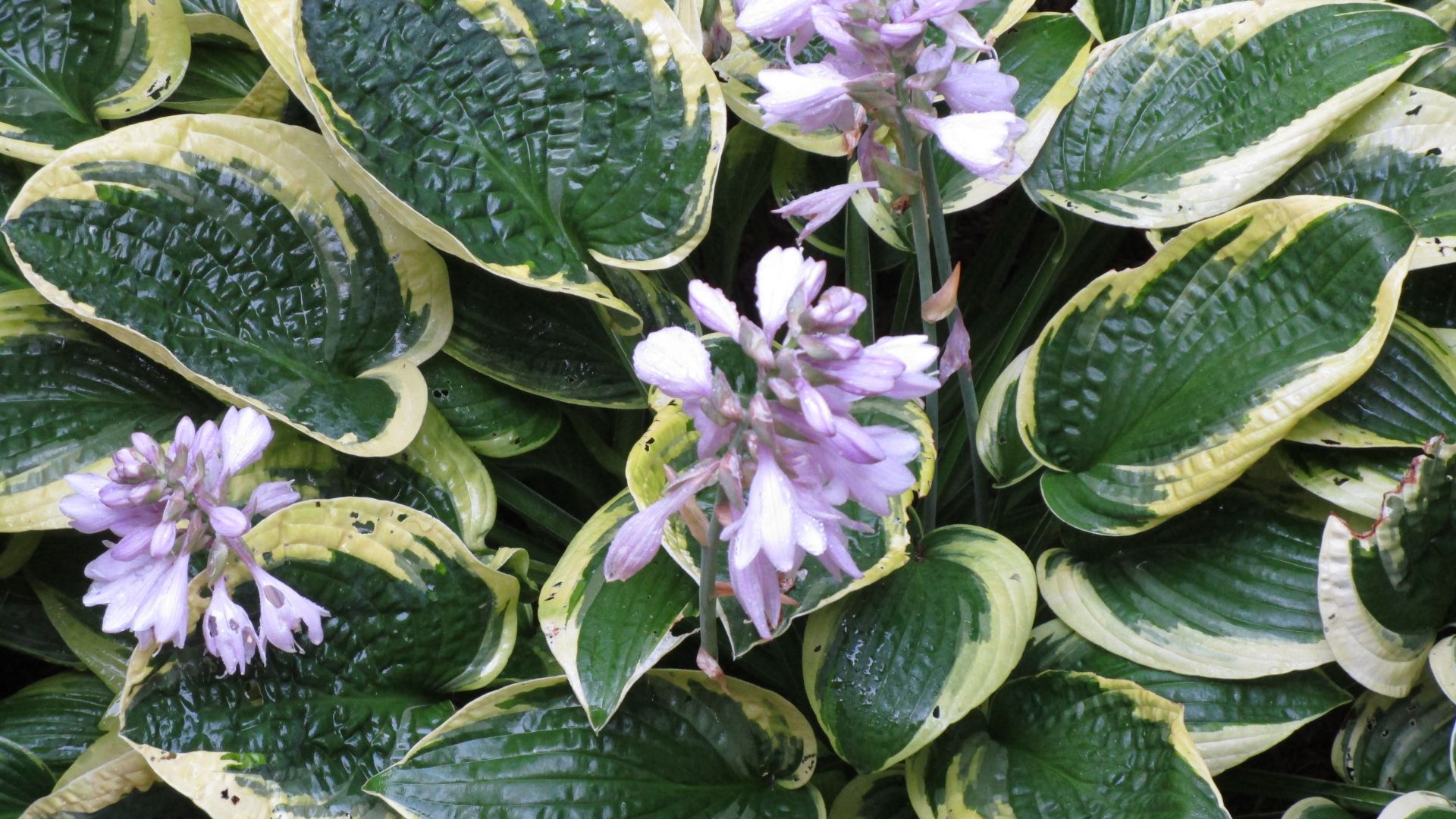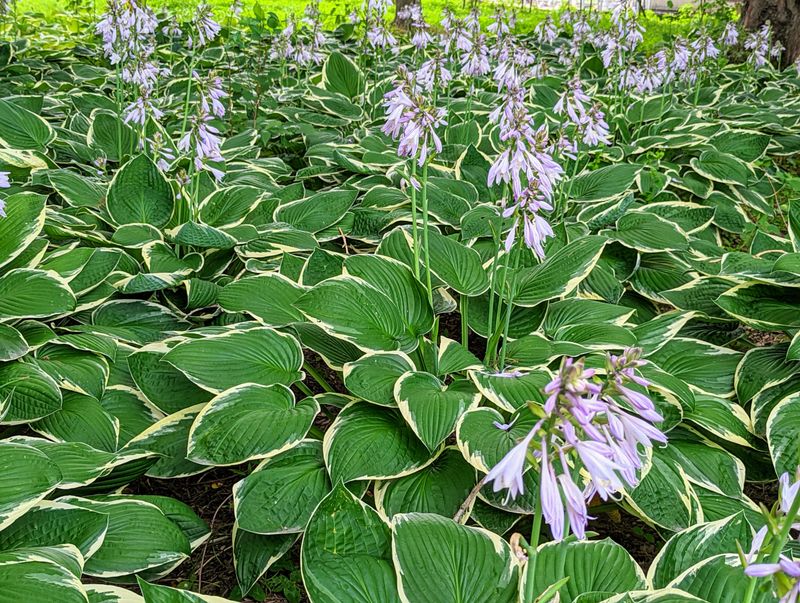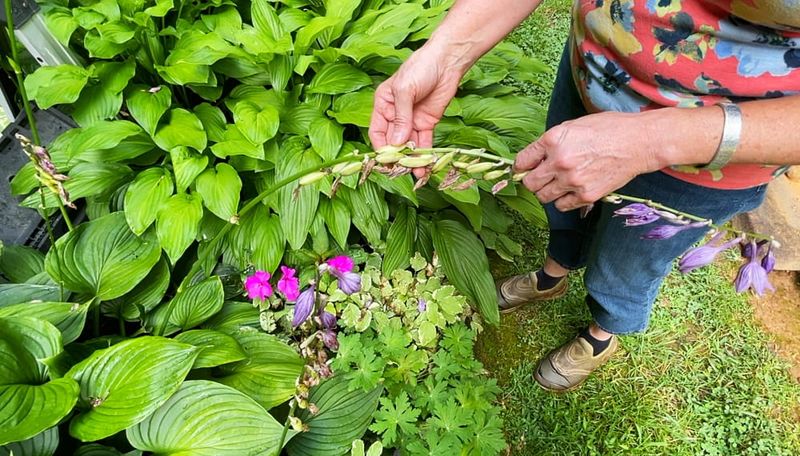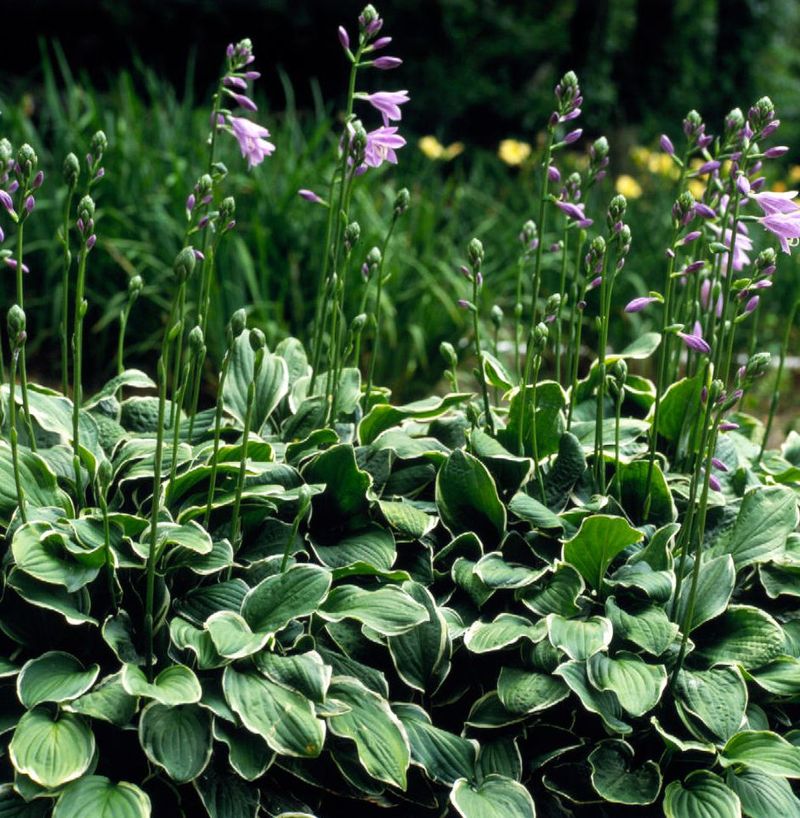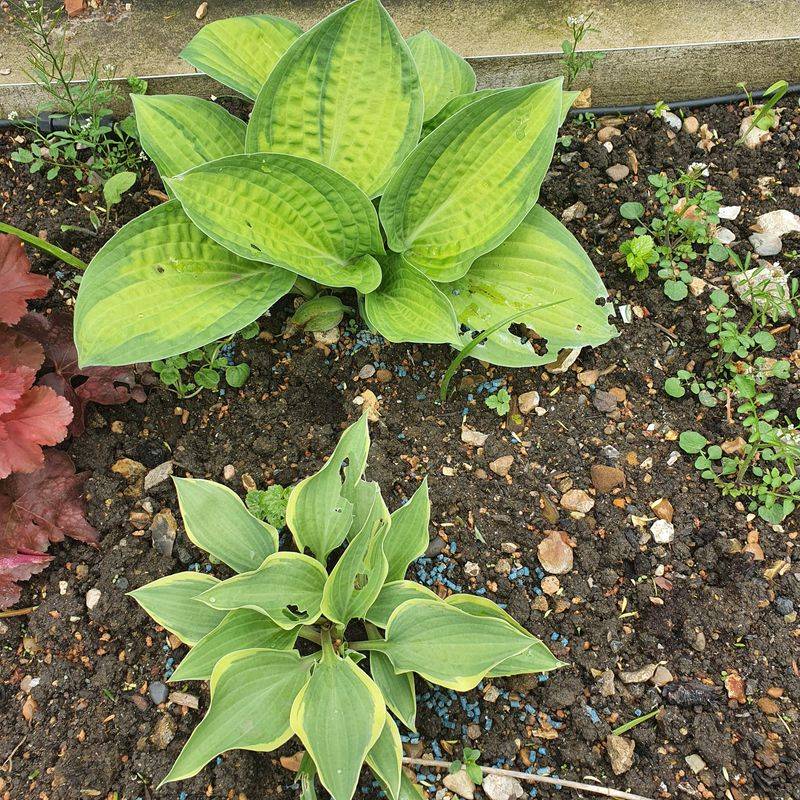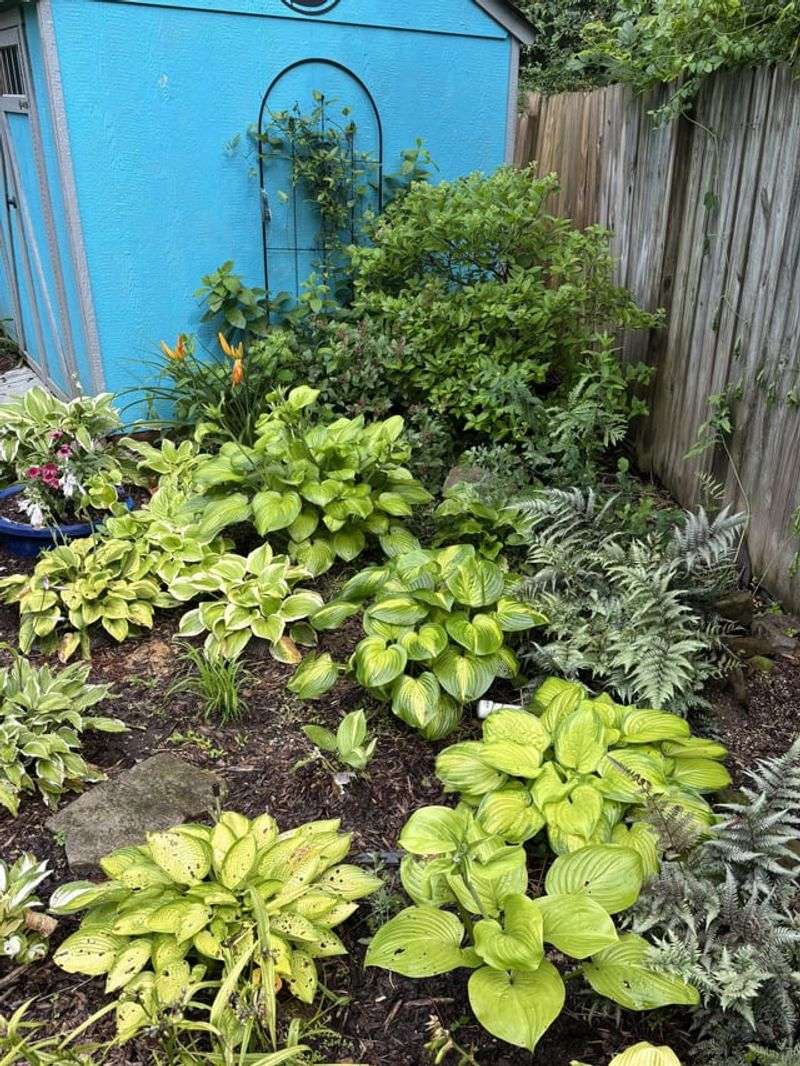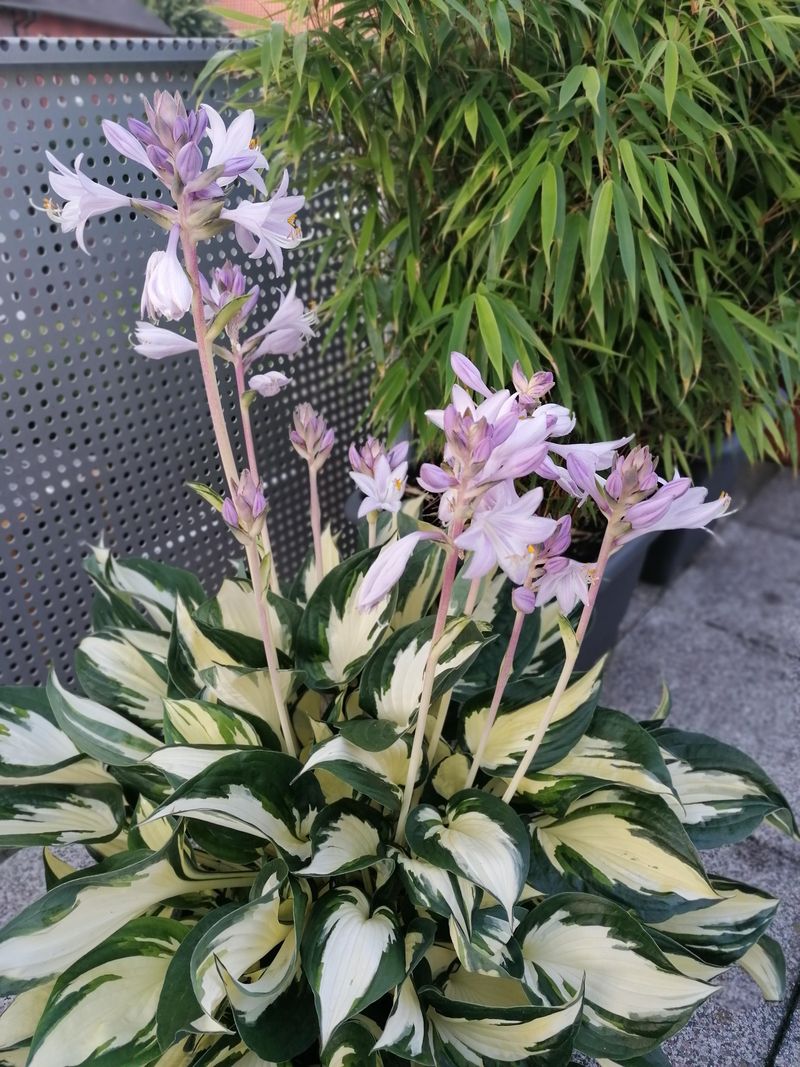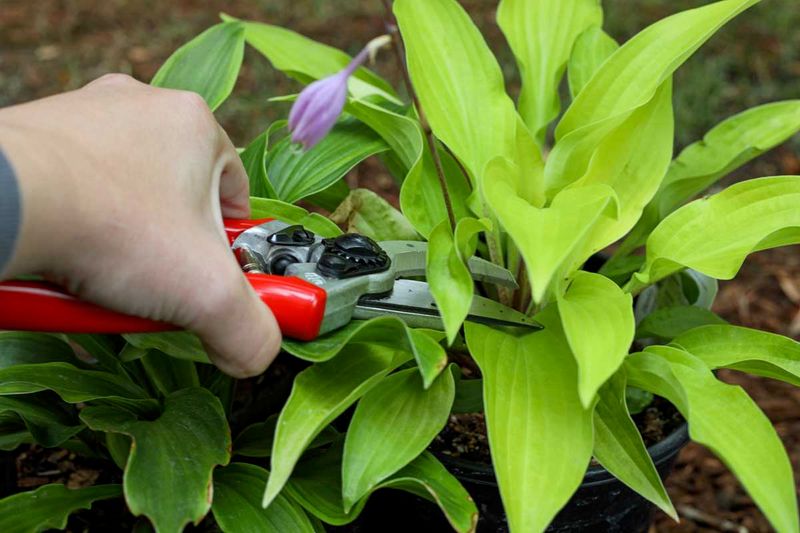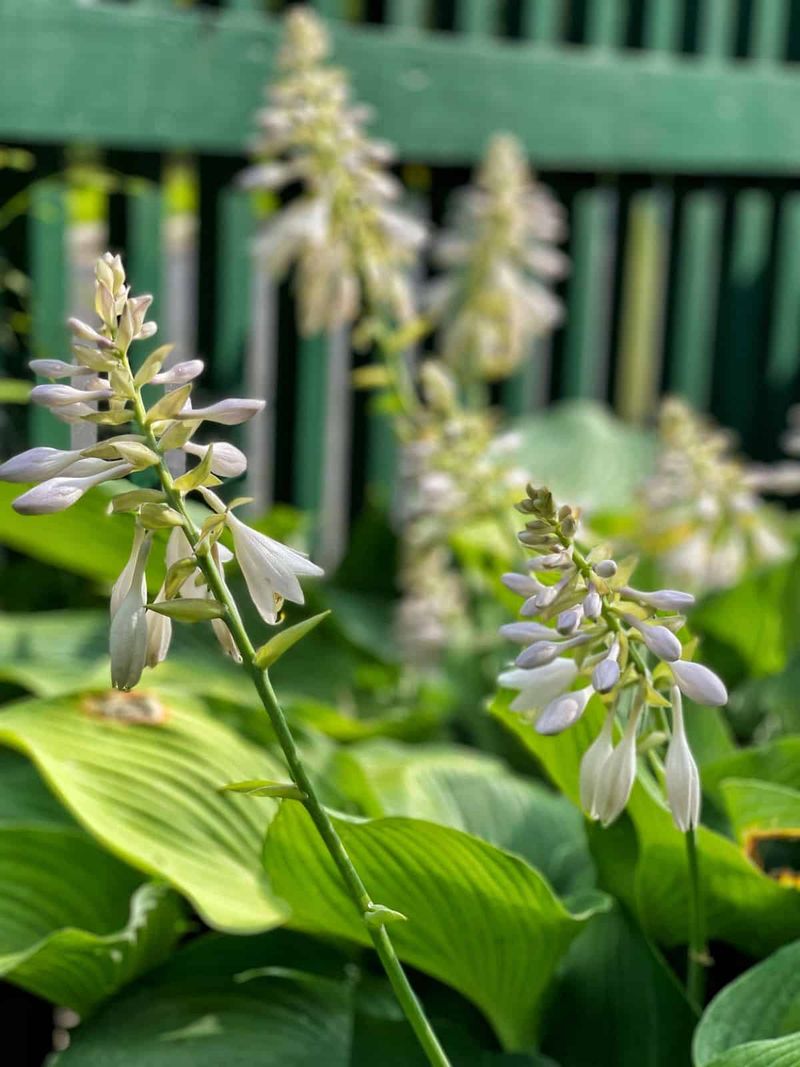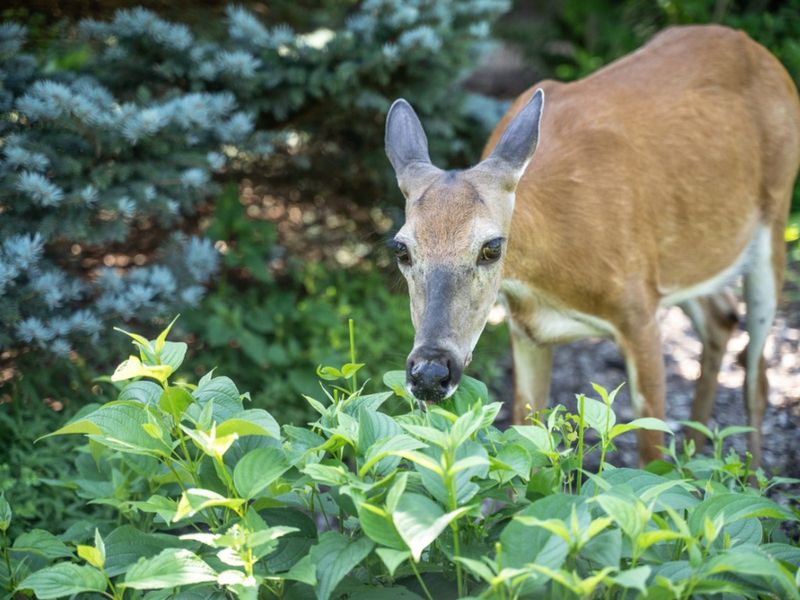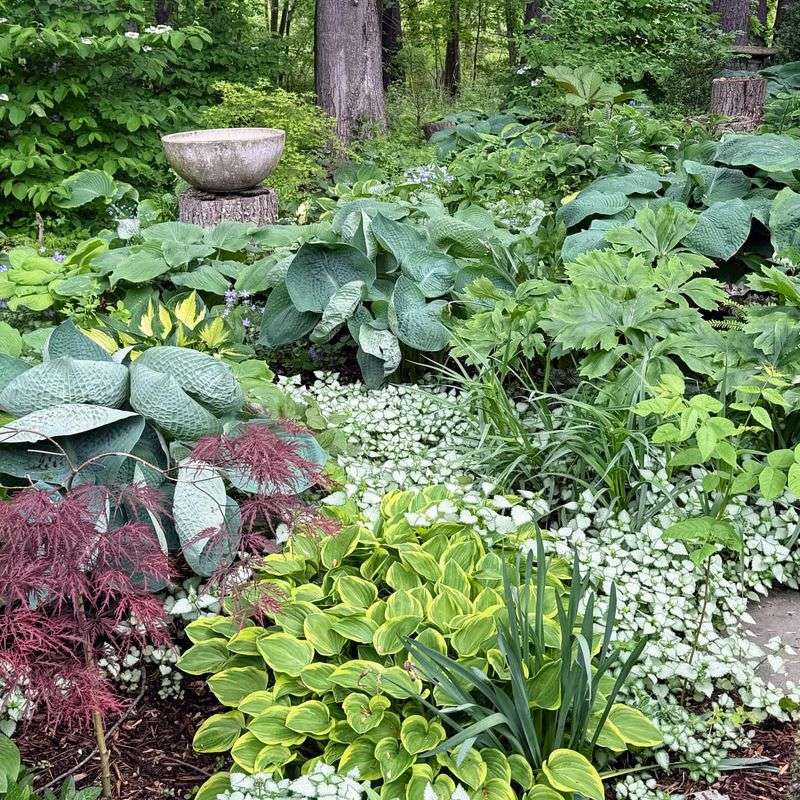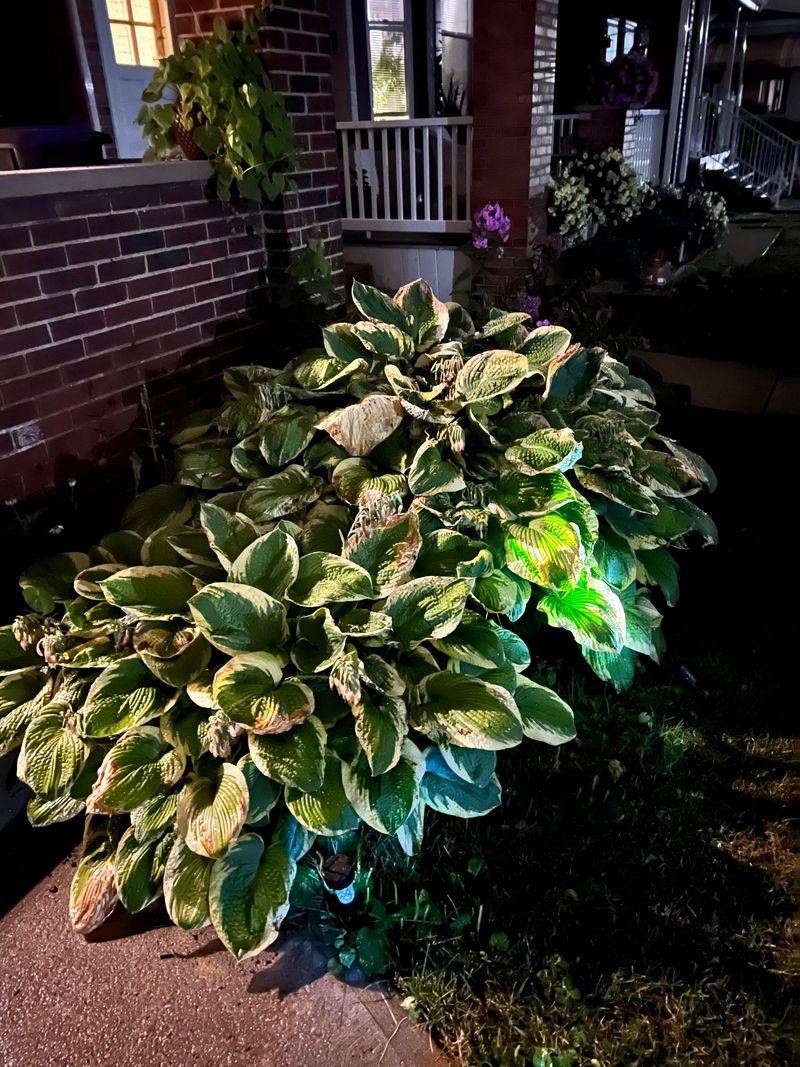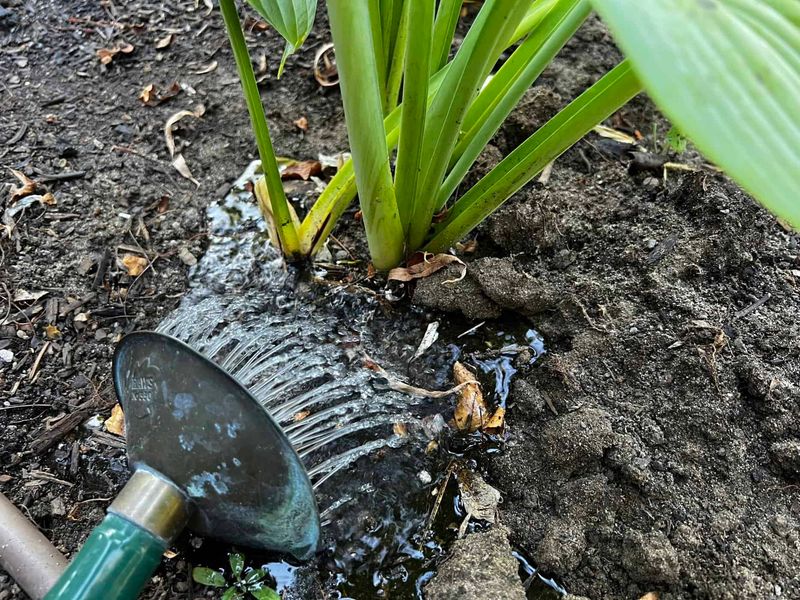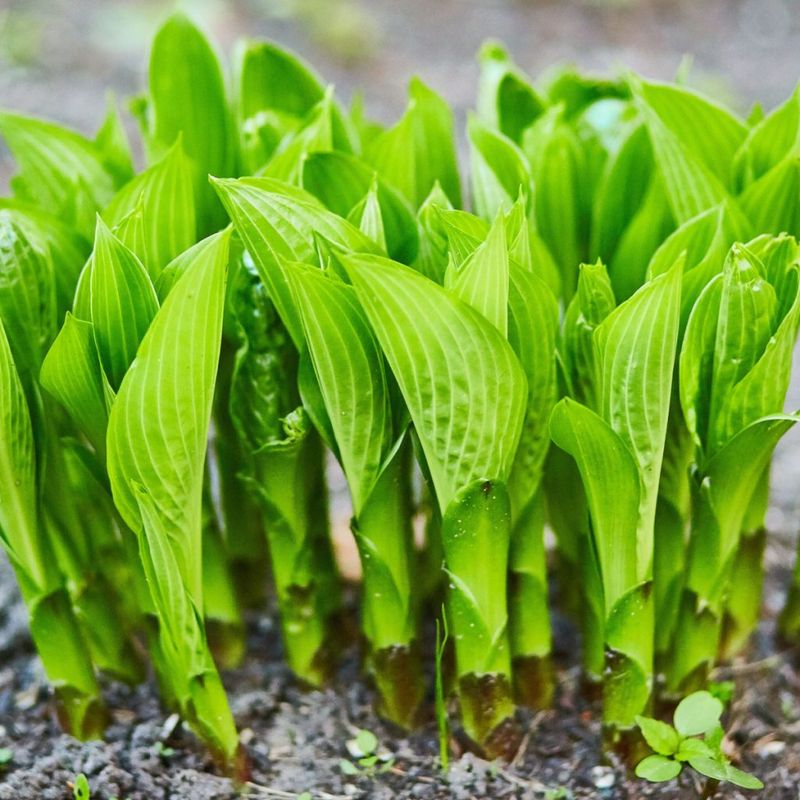Those tall flower spikes on your hostas might catch your eye, but not everyone’s a fan. While the lavender or white blooms can add a touch of charm, some gardeners feel they take attention away from the real star—the lush, sculptural foliage.
So, should you snip or let them stand? If the flowers are fading or flopping, pruning them back keeps your hostas looking tidy and focused. Cutting also directs energy back to leaf growth, which is especially helpful in smaller beds or formal borders.
On the other hand, if you enjoy the blooms and the bees they attract, leave them be and enjoy the show. It all comes down to style and purpose—hostas are versatile enough to please both the tidy-minded and the wild-at-heart gardener.
1. When You’re All About The Foliage
Many gardeners grow hostas specifically for their stunning leaves. The flowers, while nice, can actually draw attention away from that gorgeous variegation and texture.
I’ve found that removing flower stalks early helps keep the focus where I want it – on those spectacular leaves. Plus, the plant looks tidier and more intentional in landscape designs when the vertical stalks aren’t competing with the horizontal spread.
Your hosta won’t suffer from this pruning – it’s purely an aesthetic choice that many display gardens and professionals make regularly.
2. Preventing Self-Seeding Mayhem
Left to their own devices, hosta flowers eventually produce seeds that can spread throughout your garden. Before you know it, baby hostas pop up where you never intended them to grow.
Removing stalks after flowering but before seed formation prevents this garden takeover. I learned this lesson the hard way after letting my ‘Sum and Substance’ hostas go to seed one year – spent the next three seasons pulling unwanted seedlings!
For gardeners who prefer keeping their landscape precisely planned, this simple snip saves future headaches.
3. Conserving Plant Energy
Flowering takes considerable energy that your hosta could use elsewhere. By cutting flower stalks early, you redirect that energy back to root development and leaf production.
This energy conservation becomes especially important for newly planted or divided hostas that need to establish themselves. My neighbor’s struggling divided hostas perked up dramatically after we removed their ambitious flower stalks.
Think of it as helping your plant focus its resources on getting stronger rather than reproducing – particularly helpful for younger or stressed plants.
4. During Extreme Heat Waves
When temperatures soar, hostas struggle to maintain both their foliage and flowering processes. The flowers often become the sacrificial element as the plant tries to survive.
Removing flower stalks during heat waves reduces the plant’s water requirements at a critical time. After a brutal July heat streak, I noticed my de-flowered hostas bounced back faster than those still supporting blooms.
Give your plants a fighting chance during extreme weather by eliminating this unnecessary drain on their resources – they’ll thank you with healthier leaves through summer’s worst.
5. When Fighting Slug Invasions
Flower stalks create additional pathways for slugs to access your precious hosta leaves. These slimy pests can climb up stalks at night, reaching areas they might otherwise miss.
Removing the stalks eliminates these highways for destruction. Last summer, my slug-prone ‘Blue Angel’ hostas suffered noticeably less damage after I implemented a strict no-flower policy in that bed.
Combined with other slug deterrents, this approach can significantly reduce the characteristic hole-riddled leaves that frustrate so many hosta lovers.
6. Creating Cleaner Garden Sightlines
Tall flower stalks can disrupt the carefully planned visual flow of your garden design. Standing sometimes twice as tall as the foliage, they create a scattered, messy appearance in formal settings.
Removing them maintains those clean horizontal bands of foliage that designers love. Walking through Brooklyn Botanic Garden years ago, I noticed their hosta displays were meticulously de-flowered – the resulting effect was striking in its elegance.
For photography purposes or special garden events, this quick trim instantly elevates your landscape’s professional appearance.
7. When You’re Allergic To The Fragrance
Some hosta varieties produce intensely fragrant flowers that can trigger allergic reactions or headaches in sensitive individuals. These sweet scents might be pleasant to some but problematic for others.
Removing flower stalks before blooms open eliminates this potential allergen from your garden. My sister couldn’t figure out why she developed headaches while reading in her garden until we traced it to her ‘So Sweet’ hosta’s powerful fragrance.
For gardens near windows, patios, or other frequently used spaces, this consideration becomes especially important for allergy sufferers.
8. Preparing Plants For Division
When planning to divide hostas in fall, removing summer flower stalks helps redirect energy to root and crown development. This strengthens the very parts you’ll be separating later.
The plant builds up more resources in its root system instead of wasting energy on flowers that won’t benefit its division success. Before dividing my massive ‘Empress Wu’ last year, I removed all flower stalks in July – by September, the crown had developed several strong eyes ready for separation.
Consider it pre-surgery preparation that improves your chances of successful divisions.
9. When Flowers Look Scraggly
Not all hosta varieties produce equally attractive flowers. Some develop sparse, unevenly spaced blooms that look more awkward than ornamental on their gangly stalks.
Varieties like ‘Blue Mouse Ears’ often produce charming flowers, while others just look messy. The stalks on my ‘Patriot’ hostas always seem to bend at odd angles and produce unimpressive flowers – they get trimmed immediately.
Be selective and honest about which varieties actually earn their keep with their blooms – there’s no rule saying you must keep them all.
10. Reducing Deer Temptation
Deer find hosta flowers particularly delicious – even more tempting than the leaves they’re already known to devour. Those tall stalks basically serve as flagpoles advertising a tasty meal.
Removing flower stalks can make your garden slightly less appealing to these persistent browsers. My countryside clients report that de-flowered hosta beds suffer somewhat less deer damage than flowering ones, especially during fawn-rearing season.
While not a complete solution to deer problems, it’s one more strategy in the ongoing battle to protect these shade garden favorites.
11. Making Cut Flower Arrangements
Those tall flower stalks don’t have to be garden waste – they make surprisingly long-lasting cut flowers for indoor arrangements. Their architectural quality adds height and structure to bouquets.
Cut stalks when flowers are just beginning to open for longest vase life. I’ve created stunning minimalist arrangements using just hosta blooms and large leaves that lasted over a week indoors.
White-flowered varieties like ‘Royal Standard’ look particularly elegant against dark foliage, while lavender bloomers complement pink and purple garden flowers beautifully.
12. Reducing Seed Waste In Sterile Hybrids
Many modern hosta varieties are sterile hybrids that produce flowers but set little viable seed. These plants waste energy creating reproductive structures that can’t fulfill their biological purpose.
Removing these functionally useless flowers redirects resources to the foliage display. My collection of tissue-cultured hostas from specialty nurseries rarely produces viable seeds – cutting their stalks feels like doing them a favor.
Think of it as preventing the plant equivalent of spinning its wheels, allowing it to focus on what it does best – producing spectacular leaves.
13. Preventing Disease Spread
Flower stalks can sometimes become entry points for fungal and bacterial diseases, especially during rainy periods. Their hollow structure collects water, creating perfect conditions for pathogens.
Removing stalks reduces these potential infection sites. After losing several plants to crown rot that seemed to start at flower stalk junctions, I’ve become vigilant about removing stalks in areas with poor air circulation.
This precaution becomes particularly important in humid climates or during unusually wet growing seasons when disease pressure is already high.
14. When Preparing For Winter
Dead flower stalks left standing through fall become brittle hazards that can damage crown tissue during winter freezes. These hollow tubes collect water that freezes and expands, potentially harming the plant’s growing points.
Removing spent stalks in autumn cleanup prevents this issue entirely. A garden mentor taught me to cut stalks at their base rather than leaving stubs – those little pockets can still collect water and cause problems.
This simple step, along with proper mulching, helps ensure your hostas emerge strong and healthy in spring.
15. Focusing Growth In Young Plants
Newly planted hostas benefit tremendously from having their flower stalks removed in the first year or two. Young plants need to establish strong root systems before expending energy on flowering.
This early intervention helps them size up faster and develop better crown structure. The tiny ‘June’ hosta I planted without blooms its first year tripled in size by the next season, while its flowering neighbor grew much more slowly.
For impatient gardeners wanting that full, mature look quickly, this small sacrifice pays big dividends in establishing impressive specimens.

